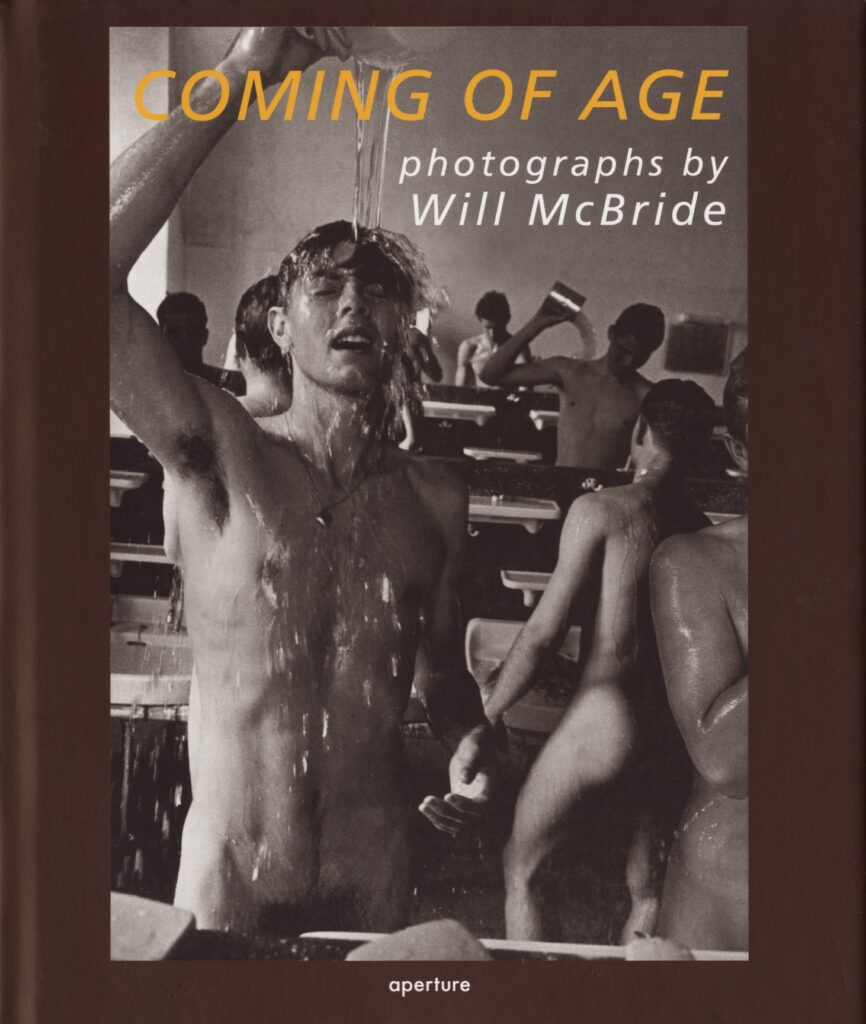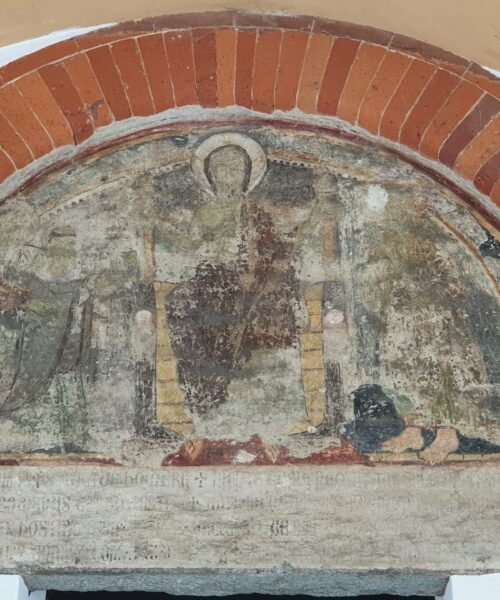Born in 1931 in the American town of St. Louis, Will McBride made Berlin his artistic and personal sanctuary, concluding his earthly journey there in 2015. This transatlantic crossing permeated his entire career arc, culminating in contributions to renowned magazines like “Stern” and “Esquire”. Each photograph was a visual dialogue, a subtle interweaving of American and European influences, transcending mere image capture to explore the depths of two culturally distinct yet inextricably linked worlds.
McBride was a born observer, endowed with an almost supernatural ability to scrutinize the soul of people and situations he faced through the lens. This intuition consistently guided him in his journalistic work, a universe where capturing a single detail could turn a piece of news into an eternal story. Despite the camera’s potential to seem cold and distant, his lens was an extension of his empathy; a tool that allowed him to explore humanity’s hidden sides, turning each portrait into an emotional fresco.
In each of his works, from high fashion to the most intimate portraits, the common denominator was always a subtle but palpable human connection. His photography did not merely document; it aspired to understand, to communicate, to touch. It was as if McBride was never really an external observer, but rather an integral part of the emotional fabric of the stories he told. This is the unforgettable legacy he has left us: an invitation to see the world, in its infinite complexities, through the eyes of someone who can capture the hidden magic in every single moment.
McBride’s life reflected a certain ‘hippie’ spirit in terms of expressive freedom, challenging social conventions, and an unconventional approach to life. This spirit was evident not only in his personal lifestyle but also in his artistic work. McBride was not interested in portraying a sweetened or idealized version of reality, preferring instead to capture life as it is, with all its imperfections, complexities, and beauty.
A distinctive aspect of McBride’s work was his use of young, often male models. Throughout his career, McBride wove a dense network of both professional and personal relationships with the people he portrayed, a fact that often exposed him to harsh judgments and heated discussions. However, the integrity and sensitivity that permeated his working method were undeniable. Much of his most impactful work was born from this visceral connection he established with his protagonists.

Publications
Will McBride produced several series of photo books that exemplarily represent his artistic approach and worldview. In this article, we recall only a few, the most representative ones.
Show Me!

Published in the culturally vibrant environment of 1974, “Show Me!” was born from the collaboration between author Helga Fleischhauer-Hardt and photographer Will McBride. Intended as a pedagogical guide for young people, the book addresses the delicate themes of puberty and sexuality through a bold and unconventional lens. Not just illustrative texts, but also direct and unadulterated images of young people in various stages of physical maturation.
This work aimed to make transparent and understandable the physical and psychological changes that young people go through, offering an explanatory and taboo-free point of view. In an era of increasing openness on these themes, the book sought to be a beacon of understanding in a sea of myths and preconceptions.
Yet, the frankness of the images became the focus of a heated public discussion, leading to the work being banned in several jurisdictions. On one hand, a crowd of parents and education professionals raised ethical issues about exposing young people to such explicit representations. On the other, there were those who saw in the book a fresh and realistic methodology for sex education.
In any case, the dialogue around “Show Me!” underscores the revolutionary scope of the approach adopted, a reflection not only of its creators’ visions but also of a historical period in which the boundaries of cultural discussion were expanding in unexpected ways.
Siddhartha

Imagining Will McBride grappling with Hermann Hesse’s “Siddhartha” is like witnessing a dialogue of light and shadow between two kindred spirits, expressed through different mediums. The choice to adapt this deeply spiritual and introspective narrative into a visual language is indicative of McBride’s versatility and depth of thought.
Hesse’s novel is a text in which lexicon becomes landscape, where words outline the contours of spiritual mountains and emotional valleys. Siddhartha, the protagonist, faces a sequence of epiphanies and disillusionments, becoming the pivot through which rotate eternally human questions: the search for self, love, pain, communion with nature, and the continuous struggle to understand the puzzle of existence. This is a book where every word resonates like a mantra, an invitation to look within and outside oneself.
And here comes Will McBride, armed with his camera like a lens shaman. His 1982 photographic adaptation of “Siddhartha” is a bold and heartfelt attempt to translate into images what Hesse had formulated in words. With his eye for detail and his talent for capturing human essence, McBride uses photography to map Siddhartha’s inner journey. We imagine intense portraits and landscapes that serve as visual metaphors, making palpable the tension between the divine and the earthly, the eternal and the ephemeral.
McBride, as always, does not shy away from complexities or taboos. His photographs would likely have explored the more human and earthly aspects of Siddhartha: his inner conflict, his relationships, his struggle with sensuality, and his journey towards enlightenment. The choice to represent such a spiritually infused text also indicates the breadth of McBride’s interests and his predisposition to dive into deep and often elusive thematic waters.
This adaptation unites two seemingly distinct worlds: Hesse’s literary narrative and McBride’s photographic eye, both in an eternal pilgrimage to probe the depths of the human soul. McBride’s photographs thus become not only a tribute to the text but a continuation of the dialogue started by Hesse, a dialogue that transcends the barriers of time, medium, and, above all, simple human understanding.
Coming of Age

Launched in 1999, “Coming of Age” is a photographic collection by Will McBride that targets the intricate dynamics of adolescence and the ritual passage into adulthood. Accumulated over an extended period, the photographs present a mosaic of human experiences, emotions, and dilemmas that mark this decisive phase of life.
Beyond being visual icons, the works in “Coming of Age” function as compelling narratives that probe various aspects of teenage life, from friendship and affections to inner conflict and self-discovery. With a remarkable ability to capture moments of true fragility and sincerity, McBride endows his photographs with a pronounced and lasting emotional impact.
One image might reveal young people navigating the labyrinth of their emerging sexuality, while another might embody the apprehension and inevitable tensions of growing up. There are snapshots imbued with joy and lightness, and others, instead, immersed in a state of meditation and self-analysis.
Unlike others who idealize or soften the adolescent experience, McBride dedicates himself to portraying it in all its authentic complexity. His creations highlight the beauty, difficulty, and occasionally the inherent harshness in the process of growing up, making the collection not only an artistic triumph but also an invaluable social testimony.
In the totality of its composition, “Coming of Age” emerges as a fundamental pillar in the artistic corpus of McBride and a sharp visual examination of adolescence. Thanks to his sensitive and incisive touch, the artist manages to evoke the essence of an age as tumultuous as it is formative, capturing its challenges, yearnings, and aspirations.
Foto-Tagebuch, 1953-1961

The volume “Foto-Tagebuch, 1953-1961” acts as an intimate window into the daily life and artistic evolution of McBride during these fundamental years. It encompasses a variety of images ranging from affectionate portraits of friends and relatives to moments captured during travels, from snapshots of social events and demonstrations to the documentation of his artistic practice. This collection serves as a visual chronicle, tracing his journey both as an individual and as a creator.
This collection of photographs is invaluable, revealing not only McBride’s work during a decisive phase of his professional life but also highlighting the more personal and intimate facets of his everyday life. The images that make up “Foto-Tagebuch, 1953-1961” mark a period of maturation and refinement for McBride, both artistically and personally.
During these years, the artist was shaping his distinctive artistic touch and immersing himself in themes that he would later continue to unveil, such as the intricacies of adolescence, the dynamics of sexuality, and the trivialities of everyday life. In summary, “Foto-Tagebuch, 1953-1961” is not only a dive into McBride’s growth trajectory as an artist but also offers a lens through which to observe his personal journey and creative intertwining.
I, Will McBride

“I, Will McBride” (1997) acts as a visual journey through McBride’s entire career, outlining the artist both through the lens of his art and through his written comments. More than just a simple anthology of his most notable creations, the book is configured as an image autobiography, an intimate diary that narrates the metamorphoses of his being and his artistic style.
The collection is enriched by McBride’s personal considerations, detailed commentaries that frame and deepen each photograph. These narrative texts act as magnifying lenses, focusing the reader’s attention on emotional moments, subtle thoughts, and circumstances that captured the artist’s imagination during various seasons of his existence and professional journey. In this union of visuality and language, a multifaceted vision of McBride emerges: a gaze that investigates not only his artistic evolution but also the more hidden tesserae of his existential mosaic, the ties that shaped him, and the human episodes that left a mark.
The work presents itself as an eclectic compendium, a catalog that varies from photographic reportage to portraits of formal composure, up to images saturated with discreet but penetrating pathos. McBride does not fail to include images that captured significant historical and social moments, as well as shots that probe topics such as sexuality, human relationships, and various forms of love.
Overall, “I, Will McBride” is a powerful testimony, a visual and textual summa that casts an intimate and thoughtful light on the work and life of a 20th-century artistic icon. Images and words converge in a narrative that becomes both an invaluable document of his artistic corpus and a sharp meditation on his human and creative journey.

Sculptor and Painter
Will McBride emerges as an artist of multiple talents, a figure who did not settle for expressing himself in just one medium. His initial formative experiences in the United States saw him honing his skills in painting and illustration at renowned academies, before leaving his homeland for the diversified cultural context of Germany. Here, he became a respected name in the world of photography. As the years passed and he migrated to Italy in the 1970s, McBride expanded the boundaries of his creativity. He not only continued to capture moments with his lens but also reopened the chapter on painting and embarked on a new artistic adventure in the field of sculpture.
Although not gaining the same notoriety as his photographic works, his three-dimensional creations have nevertheless found a home in some curated exhibitions, thereby enriching the mosaic of his artistic identities.
Although his sculptural creations do not enjoy the same recognition as his images captured on film, they have nonetheless found space in selected exhibitions, adding another nuance to his identity as a complex artist. For example, in 1991, he presented a sculpture, painting, and photography exhibition at the Galleria Brochier in Munich. Moreover, in the 1980s, he created several sculptures at the Tommasi and Belfiore Foundries in Pietrasanta, Italy, and participated in various exhibitions in the region.
Among his most well-known sculptural works is “No War! Monument,” a large installation of sculpture and painting he began working on in 1995. This work reflects his long-term commitment to social and political themes, an important aspect of his work in all the artistic fields he was active in.


Will McBride manifests himself as an ever-changing artistic entity, a figure that has been able to draw aesthetic and conceptual arcs through a multiplicity of mediums: from photography to visual arts such as painting and sculpture, to illustration. His artistic language has been one of bold dissent, an uncompromising investigation into the intricacies of socially delicate themes such as puberty, sexuality, and war conflicts.
This indomitable spirit has permeated his entire body of work, making him a cultural beacon in the panorama of the 20th century. His predisposition for nonconformity was not limited to the subjects he chose to address but deeply influenced his choice of expressive mediums. McBride never confined himself to one category but demonstrated chameleonic versatility, oscillating between photography, painting, sculpture, and illustration as if each were a different room of the same creative house.
It is in sculpture and painting, perhaps, that his multifaceted talent finds a kind of culmination, embodying a continuous artistic metamorphosis and an unwavering ethical commitment. Even when he decided to explore the third dimension or to mix pigments on canvas, McBride’s intent was always to probe and dissect socially and politically relevant themes.
The legacy of Will McBride is an aesthetic chronicle of our time, a mosaic of artistic expressions that merge into a unified narrative, a kind of visual and conceptual symphony that remains as an enduring testimony of his skill and his inexhaustible desire to seek truth and beauty through art. His work is an open dialogue with culture and society, a confrontation that survives the artist himself, continuing to interrogate and challenge us, always keeping his resonance and relevance alive.













